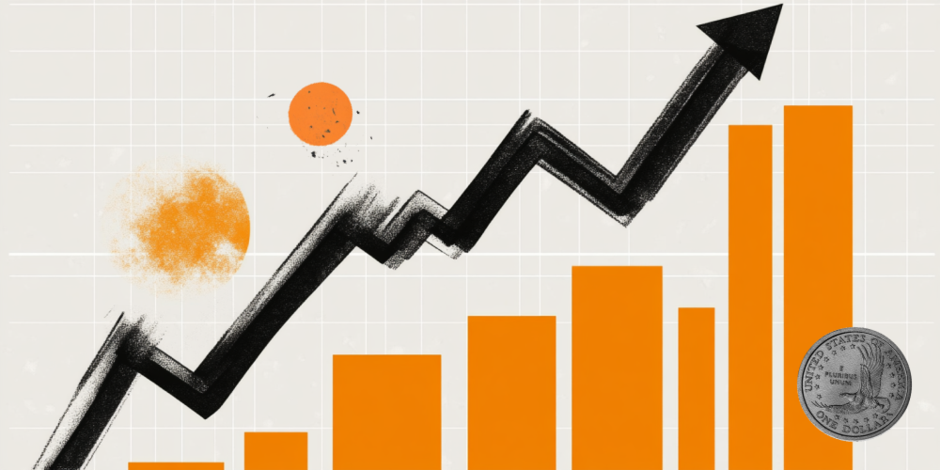US Dollar rebounds while investors still concerned over erratic tariff headlines
- The US Dollar finds ground after an intense sell-off in the last few trading days.
- Investors doubt the attractiveness of the world’s reserve currency due to significant U-turns by Trump in dealmaking.
- Fed Waller backs monetary policy easing under a large-tariff scenario with a significant economic slowdown.

The US Dollar (USD) gains temporary ground after stabilizing near its recent lows, with the US Dollar Index (DXY) rebounding from its three-year low of 99.00 to 100.00 during North American trading hours on Tuesday.
US Dollar PRICE Today
The table below shows the percentage change of US Dollar (USD) against listed major currencies today. US Dollar was the strongest against the Euro.
| USD | EUR | GBP | JPY | CAD | AUD | NZD | CHF | |
|---|---|---|---|---|---|---|---|---|
| USD | 0.29% | -0.29% | -0.19% | 0.27% | -0.68% | -0.87% | 0.27% | |
| EUR | -0.29% | -0.57% | -0.47% | -0.01% | -0.89% | -1.15% | -0.01% | |
| GBP | 0.29% | 0.57% | 0.09% | 0.57% | -0.32% | -0.58% | 0.57% | |
| JPY | 0.19% | 0.47% | -0.09% | 0.46% | -0.45% | -0.81% | 0.45% | |
| CAD | -0.27% | 0.01% | -0.57% | -0.46% | -0.90% | -1.14% | 0.00% | |
| AUD | 0.68% | 0.89% | 0.32% | 0.45% | 0.90% | -0.26% | 0.89% | |
| NZD | 0.87% | 1.15% | 0.58% | 0.81% | 1.14% | 0.26% | 1.15% | |
| CHF | -0.27% | 0.00% | -0.57% | -0.45% | -0.00% | -0.89% | -1.15% |
The heat map shows percentage changes of major currencies against each other. The base currency is picked from the left column, while the quote currency is picked from the top row. For example, if you pick the US Dollar from the left column and move along the horizontal line to the Japanese Yen, the percentage change displayed in the box will represent USD (base)/JPY (quote).
However, the recovery move could be short-lived as financial market participants remain concerned over United States (US) President Donald Trump’s erratic tariff announcements, which have led them to doubt the structural attractiveness of the US Dollar.
Analysts at Commerzbank said, “With every U-turn in Trump’s 'dealmaking', the US president destroys further planning security and even more trust, which is why we ultimately do not expect any significant recovery in the US dollar as long as this uncertainty persists for all participants in world and economic affairs.”
Investors started doubting the credibility of the US Dollar after the declaration of a 90-day pause on reciprocal tariffs by Trump on all of its trading partners, except China, and his plans of reassessing automobile duty. On Monday, Trump said that he is exploring temporary exemptions for tariffs on imported vehicles and related parts as domestic automakers need more time to set up manufacturing facilities at home.
Additionally, firming Federal Reserve (Fed) dovish bets due to fears of a US economic recession due to Trump’s economic policies have also weighed on the US Dollar. On Monday, Fed Governor Christopher Waller supported the need for interest rate cuts to battle against potential economic recession despite inflation expectations remaining escalated. "I expect the risk of recession would outweigh the risk of escalating inflation, especially if the effects of tariffs in raising inflation are expected to be short-lived," Waller said.
US Dollar FAQs
The US Dollar (USD) is the official currency of the United States of America, and the ‘de facto’ currency of a significant number of other countries where it is found in circulation alongside local notes. It is the most heavily traded currency in the world, accounting for over 88% of all global foreign exchange turnover, or an average of $6.6 trillion in transactions per day, according to data from 2022. Following the second world war, the USD took over from the British Pound as the world’s reserve currency. For most of its history, the US Dollar was backed by Gold, until the Bretton Woods Agreement in 1971 when the Gold Standard went away.
The most important single factor impacting on the value of the US Dollar is monetary policy, which is shaped by the Federal Reserve (Fed). The Fed has two mandates: to achieve price stability (control inflation) and foster full employment. Its primary tool to achieve these two goals is by adjusting interest rates. When prices are rising too quickly and inflation is above the Fed’s 2% target, the Fed will raise rates, which helps the USD value. When inflation falls below 2% or the Unemployment Rate is too high, the Fed may lower interest rates, which weighs on the Greenback.
In extreme situations, the Federal Reserve can also print more Dollars and enact quantitative easing (QE). QE is the process by which the Fed substantially increases the flow of credit in a stuck financial system. It is a non-standard policy measure used when credit has dried up because banks will not lend to each other (out of the fear of counterparty default). It is a last resort when simply lowering interest rates is unlikely to achieve the necessary result. It was the Fed’s weapon of choice to combat the credit crunch that occurred during the Great Financial Crisis in 2008. It involves the Fed printing more Dollars and using them to buy US government bonds predominantly from financial institutions. QE usually leads to a weaker US Dollar.
Quantitative tightening (QT) is the reverse process whereby the Federal Reserve stops buying bonds from financial institutions and does not reinvest the principal from the bonds it holds maturing in new purchases. It is usually positive for the US Dollar.
Author

Sagar Dua
FXStreet
Sagar Dua is associated with the financial markets from his college days. Along with pursuing post-graduation in Commerce in 2014, he started his markets training with chart analysis.
















